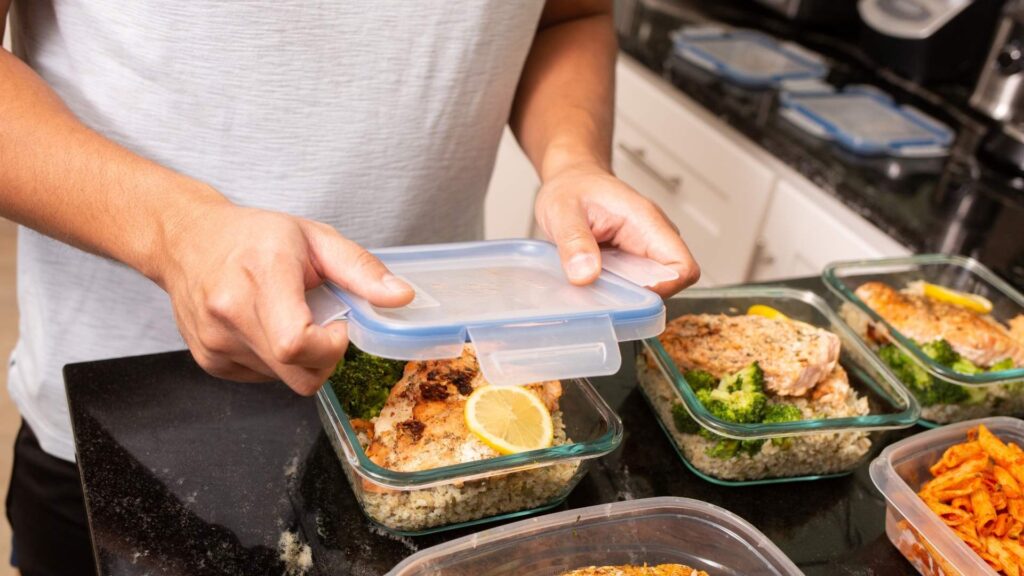
Budget Meal Prep: How to Eat Well Without Breaking the Bank
Budget meal prep is a game-changer for anyone looking to save money while still enjoying healthy and satisfying meals. Whether you’re a busy student, a working professional, or a family managing household expenses, prepping meals in advance helps you stay on top of both your nutrition and your finances. In this article, we’ll break down how to master budget meal prep, from planning and shopping to cooking and storage.
Why Budget Meal Prep Matters
Meal prepping isn’t just for fitness enthusiasts or food bloggers. It’s a practical, time-saving strategy that can significantly reduce your food costs. When you prep your meals in bulk, you minimize waste, avoid expensive takeout, and make the most of grocery store deals.
More importantly, it helps you maintain a healthier lifestyle. You’re in control of ingredients, portions, and nutritional value — which can lead to better eating habits over time.
Step 1: Set Your Meal Prep Goals
Before diving into budget meal prep, determine what you’re hoping to accomplish. Do you want to:
- Cut down your weekly food expenses?
- Reduce how often you eat out?
- Eat healthier, more balanced meals?
- Save time during the week?
Your goal will guide your meal choices, shopping list, and prep schedule.
Step 2: Plan Your Meals Ahead of Time
Effective budget meal prep starts with a solid plan. Choose a day of the week — often Sunday — to sit down and map out what you’ll eat for the next 5–7 days. Stick to simple meals that use inexpensive, versatile ingredients.
Here’s an example of a basic weekly meal prep plan:
- Breakfast: Overnight oats or scrambled eggs with toast
- Lunch: Rice bowls with beans, veggies, and grilled chicken
- Dinner: Pasta with marinara and steamed vegetables
- Snacks: Hummus and carrots, boiled eggs, or yogurt
Choose 2–3 meal options for each category and rotate them throughout the week to keep things interesting while still buying in bulk.
Step 3: Create a Smart Grocery List
Stick to your budget by creating a list of essential ingredients based on your meal plan. Categorize it by sections of the store (produce, grains, dairy, etc.) to avoid unnecessary purchases. Be sure to include:
- Budget-friendly proteins: Eggs, beans, lentils, canned tuna, and chicken thighs
- Inexpensive grains: Rice, oats, pasta, and quinoa
- Affordable veggies: Carrots, cabbage, frozen mixed vegetables, and onions
- Versatile seasonings: Salt, pepper, garlic powder, cumin, and Italian herbs
Check for weekly grocery store sales, and use coupons or cashback apps like Ibotta or Rakuten to stretch your dollars further.
Step 4: Buy in Bulk and Use Store Brands
One of the most effective budget meal prep strategies is to buy non-perishables and frozen items in bulk. Items like rice, oats, canned goods, and frozen vegetables are often much cheaper per unit when bought in larger quantities. Don’t overlook store-brand or generic products—they often have the same quality as name brands at a fraction of the cost.
Step 5: Cook in Batches
Batch cooking is the cornerstone of budget meal prep. Pick a day to cook your meals in bulk, then portion them out for the week. Use large pots or slow cookers to prepare meals like soups, stews, chili, casseroles, and stir-fries, which are perfect for reheating and storing.
Here are some budget-friendly meal ideas:
- Vegetarian chili with beans, tomatoes, and corn
- Chicken and rice with broccoli and soy sauce
- Egg and veggie breakfast muffins
- Stir-fried noodles with tofu and mixed veggies
Step 6: Invest in Quality Containers
Proper storage is key to successful meal prep. Invest in reusable containers that are microwave- and freezer-safe. Glass containers are durable and help maintain food freshness, while BPA-free plastic containers are lightweight and easy to stack in the fridge.
Label your meals with the date they were cooked and try to consume everything within 3–5 days, or freeze extra portions to enjoy later.
Step 7: Avoid Food Waste
Budget meal prep is all about maximizing what you already have. Before shopping, take inventory of your fridge, freezer, and pantry. Plan meals around ingredients you need to use up. This prevents waste and keeps your grocery bill low.
Leftovers can be repurposed too. For example:
- Roast chicken becomes chicken salad or soup
- Cooked veggies go into omelets or wraps
- Rice can be transformed into stir-fry or burrito bowls
Step 8: Keep It Flexible and Realistic
Meal prep doesn’t have to be perfect. Life happens—plans change, and you might crave something different mid-week. Allow room for flexibility by prepping components (like roasted veggies, cooked grains, and proteins) that can be mixed and matched instead of full meals.
Also, give yourself grace. Start small, even prepping just a few meals a week. As you build the habit, you’ll gain confidence and find your rhythm.
Conclusion: Enjoy the Benefits of Budget Meal Prep
Budget meal prep is a sustainable and rewarding habit that saves money, reduces food waste, and supports a healthier lifestyle. With a little planning, smart shopping, and batch cooking, you can enjoy delicious meals every day without financial stress. Whether you’re prepping for one or feeding a family, the key is consistency and keeping your system simple and achievable.
Start with just one week, track your savings, and watch how meal prepping transforms not only your food budget but also your daily routine and overall well-being.



